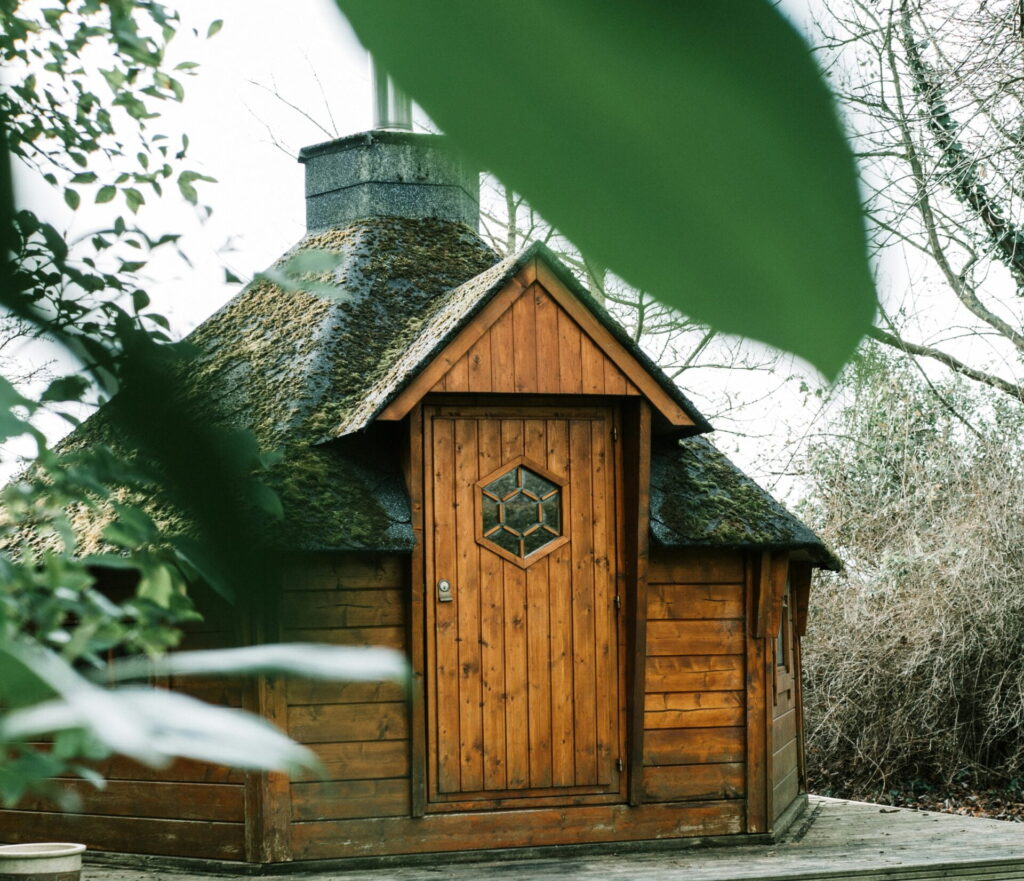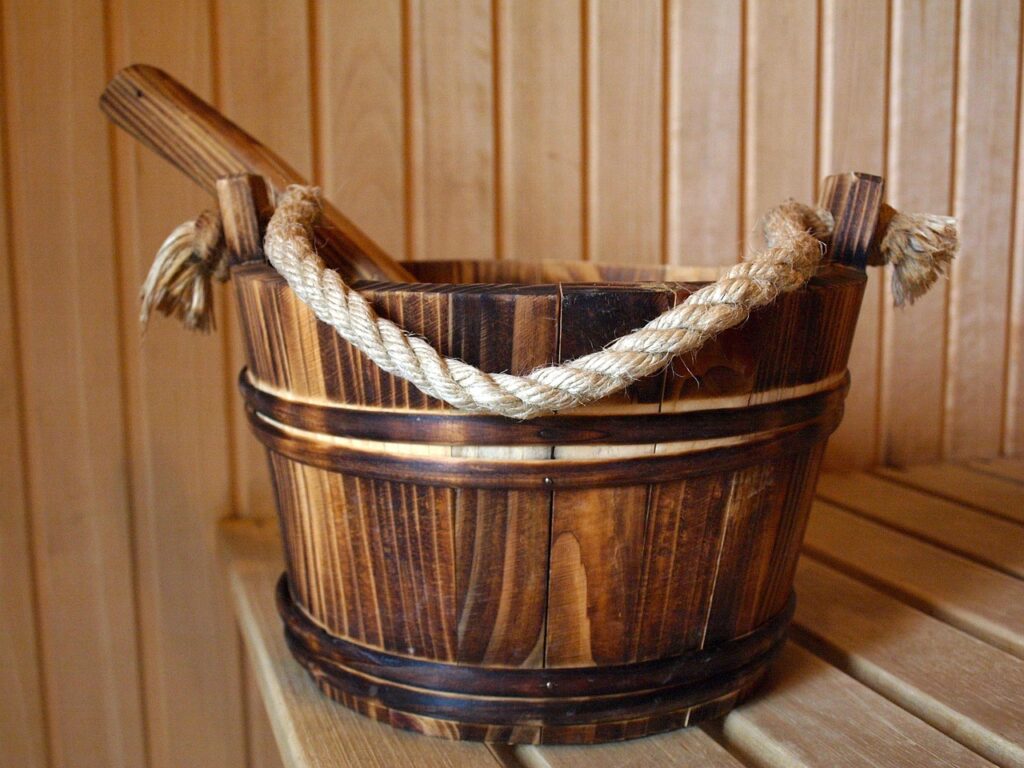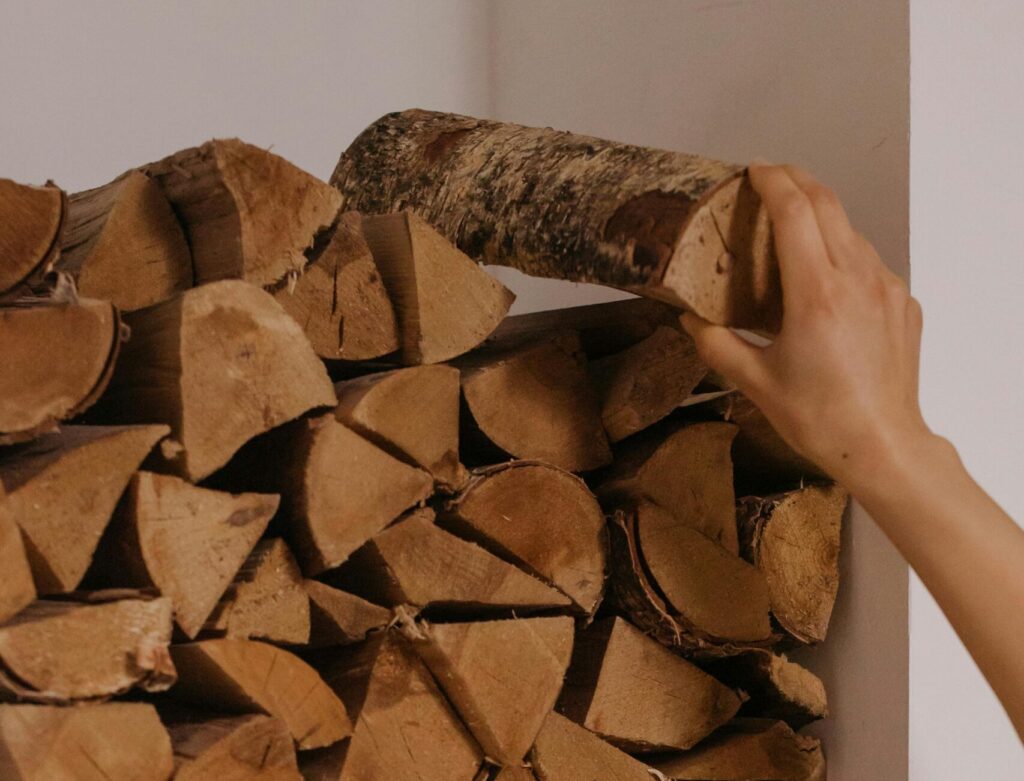Are you dreaming of a beautiful sauna of your own, but unsure how much it’ll set you back? Whether you’re considering a compact infrared model or a full traditional sauna setup, the overall home sauna cost will of course vary.
From installation fees to monthly energy bills, it’s important to know what you’re getting yourself into!
In this guide, we’ll go through the installation, operational, and maintenance costs of home saunas, to help you budget for your new addition in the most informed way possible.
Let’s get started!
How much does it cost to install a home sauna?
That’s a tricky question to answer straight.
The installation costs for a home sauna can vary widely depending on the type of sauna, its size, and the materials used.
Think about it – if you want to set up an electric sauna in the middle of the woods, its going to cost you a lotttt more to get an electricity cable running out there than if you were to set one up inside your home.
If you wanted a full-on traditional wood-burner, but you don’t have the requisite chimney and ventilation inside the home, again… that’s going to set you back potentially lots more than if you opted to place the wood burning sauna outside the home.
Whether you’re looking for an electric sauna, an infrared model, or a wood-burning sauna, the outset cost can range from as low as $2,000 for a basic model to over $34,000 for high-end, fully custom setups (find more cost breakdowns here and here).
Average purchase costs
| Sauna Type | Approximate Cost Range (Prefabricated) |
|---|---|
| Traditional Sauna (Wood & Electric) | $3,500 – $15,000 |
| Infrared Sauna | $2,000 – $8,000 |
- Traditional saunas (wood-burning and electric): Require correct ventilation and insulation due to the steam (löyly). Customisation adds an extra cost too, with features such as chromotherapy lighting, sound systems, and heater upgrades available.
- Infrared saunas: often more budget-friendly and energy-efficient, although they can still be pricy depending on model! Unlike traditional saunas, infrared models don’t require as much insulation or complex ventilation, which can help lower installation costs.

Installation location: indoor vs. outdoor
Keep in mind that the location of your sauna also impacts the price.
There are so many areas in a home you could choose. Popular spots include basements, bathrooms, or even unused closets, but you may need to allow for extra costs for electrical and ventilation setups.
We recommend consulting with a sauna installation professional to discuss potential problems with the location of a sauna, as well as proper ventilation methods. This is especially important if you have your heart set on a wood-burning model for indoors – you will need to be certain that the ventilation/chimney for smoke and carbon monoxide is all up to code.
Fair warning – this may not be possible, and an electric heater model could simplify your indoor set up.
In contrast, outdoor saunas don’t require as much ventilation but may need additional features like weatherproofing or a concrete slab foundation.
The exception to this rule is the barrel sauna, which comes with moulded cradle supports. These saunas are stabilised by their own supports, and can be placed on less even ground, like grass or bare earth.
Additional installation costs
- Electrical setup: Traditional saunas usually require a dedicated 220V circuit, which means you might need to hire an electrician. This can add $500 to $3,000 to your installation cost depending on the complexity of the wiring.
- Plumbing: If you’re installing a steam sauna (requires a water supply and drainage system) you should budget an additional $500 to $1,500 for plumbing work.
- Ventilation: Proper ventilation is essential to avoid mildew, especially for indoor saunas. Installing exhaust fans and ductwork can cost between $200 and $1,000, depending on the size of the sauna and its location.

How much will it cost to run a home sauna?
Ok, so your sauna is installed. Great! Now how much is it going to cost to run this thing?
Ongoing operational costs are going to depend on factors such as the type of sauna you choose, how often you use it, and your local electricity rates.
The annual running cost of a home sauna can be calculated as follows:
Cost = (Wattage of sauna heater x Hours of use per day x Days per year) / 1000 x Cost of electricity per kilowatt-hour
E.g.: Wattage of sauna heater = 6000W. 1hr per day. 365 days. Electricity rate = $0.12 per kWh
Operational Cost = (6000 x 1 x 365) / 1000 x 0.12 = $261.20 per year. (1)
Energy consumption by sauna type
- Infrared saunas are generally the most energy-efficient option. They use between 0.5 to 1.5 kWh per session, costing an estimated $15 to $20 per month ($USD) depending on frequency of use and local electricity rates. Since infrared saunas heat the body directly, meaning there is no need to preheat the space, the energy consumption tends to be significantly reduced.
- Traditional saunas (electric stove) tend to use more electricity. On average, a traditional sauna consumes between 1.5 and 3 kWh per session. This can cost around $25 to $30 per month ($USD) for regular users. Extended preheating time (usually 30 to 40 minutes) means an increase in energy usage. This makes them more expensive to run compared to infrared saunas.
- Traditional saunas with a wood-heater may be a cost-effective option for you if you live somewhere where wood is readily available and inexpensive. If this is not the case, consider the weigh-up between the cost of wood and the cost of electricity over time. For example, if you are living in the UK, the cost of wood may be significantly less than the current cost of energy rates!
Preheating times and energy usage
- Infrared saunas generally need to preheat for around 15 minutes or so, making them more energy-efficient. The heater targets the body, not the air, which reduces energy costs.
- Traditional saunas usually need to be preheated for 30 to 45 minutes to reach the ideal temperature. This can increase both the time and energy consumption per session.
Cost per kWh and regional variations
Of course, where you live is going to dictate the energy rates you’re paying.
The cost per kilowatt-hour (kWh) can range from 9 cents to 34 cents, with an average of around 16 cents per kWh across the United States. Make sure to calculate your expected operational costs based on your region’s electricity rates.
Maintenance costs: keeping your home sauna in shape
Although home saunas don’t require a lot of maintenance, you should be aware of some ongoing costs to budget for, especially when it comes to replacing parts or performing routine cleaning.
Replacing sauna stones, heaters, and other accessories
- Sauna stones in traditional saunas should be replaced every 1-2 years, depending on how often you sauna. These typically cost $40 to $90. Replacing them ensures optimal heat retention and even temperature distribution in your sauna sessions. If you start to notice small pieces of stone residue or rubble on the floor under your heater, you might want to think about replacing the stones.
- Heater replacement costs vary by type. Infrared heaters tend to last longer and may only need replacement after several years, with costs ranging from $200 to $1,500. Traditional electric heaters may need to be replaced more frequently due to the high heat and humidity, costing around $700 to $3,800.
Cleaning and general upkeep
- Particularly for wood components, regular cleaning is crucial. Be sure to use mild detergents safe for saunas to prevent any mould or bacteria buildup. Cleaning costs are low, but budget to spend $50 per year on cleaning supplies and ventilation system maintenance.
- For wood-burning saunas, additional costs include maintaining the chimney (a chimney sweep should be called out to inspect the flue for cracks on a yearly basis) and ensuring a proper wood supply. This could add up over time, depending on your usage frequency.

How to save money on my home sauna?
Looking to cut down on the home sauna cost overall? There are several ways to do this, both during installation, and throughout usage.
Let’s take a look.
Energy-efficient sauna models
- Choosing an infrared sauna in the first place: lower energy consumption and lack of preheating = lower energy costs. These saunas can be used more frequently without incurring high energy bills.
- Choosing a wood-burning model if you have abundant access to fire-wood, especially relevant if your region has extortionate energy rates!
- Installing a smart thermostat to control your sauna’s temperature: automatically turn on and off = less energy consumption.
Using rebates and incentives
- Some regions offer rebates for installing energy-efficient home equipment, including saunas. Check with your local energy provider to see if you qualify for any rebates, which could save you hundreds on installation costs.
DIY options for home sauna cost savings
- If you’re handy with tools, a DIY sauna kit can save you up to 30-40% on labor costs. Prefab kits are easier to install and come with all the necessary components, allowing you to assemble the sauna yourself. However, do keep in mind that you’ll still need a pro electrician to handle the wiring safely.
Wrapping up
We all know by now that investing in a home sauna can bring relaxation and health benefits. However, it’s still smart to understand the costs before jumping in headfirst.
From installation to monthly operational expenses and maintenance, planning your budget for a sauna is wise.
If you’re looking to reduce costs, energy-efficient models and smart controls can help in the long run.
Opting for an infrared model can reduce operating costs overtime. A DIY setup can help cut labour expenses from the get-go. Keeping on top of regular general cleaning will keep your sauna in top shape and help to avoid costly repairs.
We hope this home sauna cost breakdown has helped put you one step closer to creating the perfect sauna space that fits your budget!
If you’re looking for a fantastic, comprehensive breakdown of the best budget sauna options on the market, we’ve done the hard yards and pulled them all together for you. Why not check it out?
If you’re still hungry for more info, we’ve also put together an absolute beast of a post covering absolutely everything you’ll ever need to know before purchasing a sauna, right here.
- Calculating Operating Costs: A Formula




You made some decent points there. I looked on the internet for the subject matter and found most people will agree with your site.
Do you have a spam problem on this blog; I also am a blogger, and I was curious about your situation; we have created some nice practices and we are looking to trade methods with other folks, please shoot me an email if interested.
A formidable share, I just given this onto a colleague who was doing slightly evaluation on this. And he actually purchased me breakfast because I discovered it for him.. smile. So let me reword that: Thnx for the deal with! However yeah Thnkx for spending the time to debate this, I really feel strongly about it and love studying more on this topic. If possible, as you become expertise, would you mind updating your weblog with more particulars? It’s extremely helpful for me. Massive thumb up for this weblog post!
It is best to take part in a contest for the most effective blogs on the web. I will recommend this web site!
An impressive share, I just given this onto a colleague who was doing a little analysis on this. And he in fact bought me breakfast because I found it for him.. smile. So let me reword that: Thnx for the treat! But yeah Thnkx for spending the time to discuss this, I feel strongly about it and love reading more on this topic. If possible, as you become expertise, would you mind updating your blog with more details? It is highly helpful for me. Big thumb up for this blog post!
I truly appreciate this post. I?¦ve been looking everywhere for this! Thank goodness I found it on Bing. You have made my day! Thx again